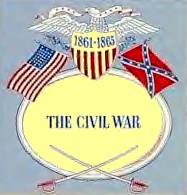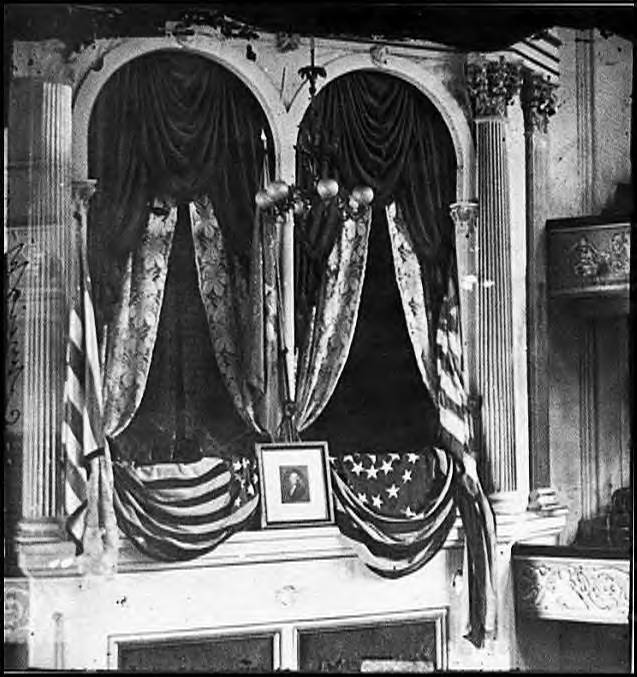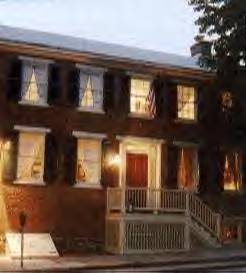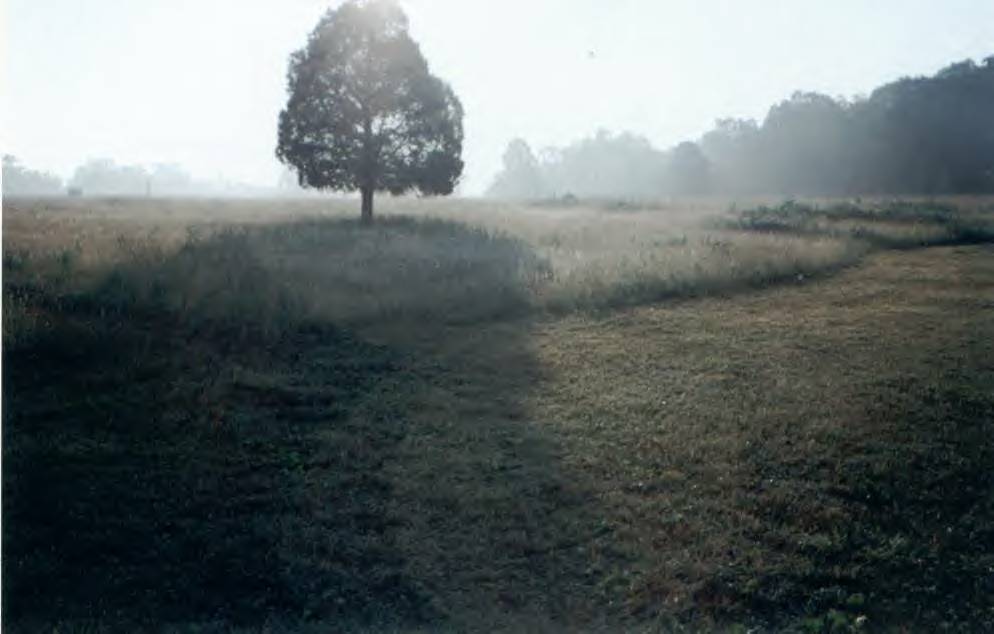|
Antietam 1st Battle of Manassas 2nd Battle of Manassas Fredericksburg |

After his retreat from PERRYVILLE, Ky., Bragg ordered a concentration at Murfreesboro, Tenn. Both the North and the South were dissatisfied with the performance of their top commanders at Perryville, and both sides made changes in organization. The Federal Dept. (and Army) of the CUMBERLAND was created under Rosecrans. The Confederate Army of TENNESSEE was created under Bragg. J. E. Johnston was sent to command all Confederate armies in the West (DIVISION OF THE WEST).
Three Confederate cavalry operations took place before the armies of Bragg and Rosecrans clashed: MORGAN'S SECOND (Lexington) RAID, Oct.'62; FORREST'S SECOND RAID (in West Tenn.), 11 Dec.'62-3 Jan.'63; and MORGAN'S THIRD (Christmas) RAID, 21 Dec.'62-1 Jan.'63. Although these raids on the Federal lines of communications did little significant damage, Rosecrans took advantage of this detachment of Confederate cavalry to move out of Nashville and attack Bragg.
Crittenden's corps advanced southeast along the line of the Nashville and Chattanooga R.R., while the other two corps-McCook and Thomas (less two divisions)-advanced to his right. Bragg was known to be deployed between Triune and Murfreesboro, and Rosecrans' plan was to turn the Confederate left while refusing Crittenden's corps.
Bragg's intelligence sources informed him immediately of Rosecrans' movement. Wheeler's cavalry successfully delayed the Federal advance while Bragg concentrated his forces at Murfreesboro. On 31 Dec. the two armies faced each other just west of Stones River. Strangely, each was planning to attack the other's right.
The Confederate division of Breckinridge (8,000) was left across the river, northwest of Murfreesboro, while Hardee's other two divisions-McCown (4,500) and Cleburne (7,000)-moved into position opposite the Federal right. The Confederate center was held by Polk's two divisions; Withers (8,500) in front, and Cheatham (5,500) to his rear. McCown's division was to attack at dawn.
The Federal right, where the initial Confederate blow was about to fall, was held by Alexander McCook's corps; Johnson's division (6,300) was on the extreme right flank, on the Franklin Road, with the divisions of J. C. Davis (4,600) and Sheridan (5,000) extending left to the Wilkinson Pike. Negley's division (4,700) of Thomas' corps was in the center of the line. Crittenden's divisions of Palmer (4,400) and Wood (5,100) extended the line to the river. In conformity to the Federal plan of attacking with their own left, two divisions were in assembly areas behind this flank: Rousseau's (6,200) of Thomas' corps, and Van Cleve's (3,800) of Crittenden's. (Two of Thomas' divisions were absent: Mitchel's was garrisoning Nashville; Reynolds' was pursuing Morgan's raiders. Only one brigade of Fry's division took part in the battle; one arrived 2 Jan. and the other was pursuing Morgan.) Rosecrans had ordered his attack to start at 7 A.M., after his troops had eaten.
The Federal brigades of Kirk and Willich were driven back by the brigades of Rains, Ector, and McNair as the battle opened at dawn. Although Kirk's outposts detected the enemy advance, Willich's brigade was caught by surprise (Horn, 200). As Cleburne's division kept up the momentum of the attack by moving up on McCown's right, the Federal division of Davis and Sheridan held off the attacks of Hardee's three divisions. A second assault, reinforced by Cheatham's division (Polk's corps), was also repulsed. A third effort enveloped Davis' right, forcing him to retreat and thereby exposing Sheridan's right. About 9:30 Sheridan counterattacked with Roberts' brigade and gained sufficient time to withdraw to a new position behind the Nashville Pike and at a right angle to Negley's division. Rousseau's division was brought up to form on Sheridan's right. Davis followed Johnson's routed division to the rear, while Wharton's cavalry brigade (2,000 men) harried his flank from the west.
A renewed attack, all along the Federal front, finally forced Sheridan, whose ammunition was exhausted, to withdraw. This left a gap between Negley and Rousseau which the Confederates exploited. Shepherd's brigade of regulars lost 20 officers and 518 killed and wounded in covering a general withdrawal of the Federal right half of the line to a new position. The right of Palmer's division also had to withdraw to avoid being enveloped; but his left-Hazen's brigade-held its strong position on a wooded ridge astride the railroad. This was a four-acre oak grove which reports of the battle call the Round Forest, but which the troops dubbed "Hell's Half Acre." By noon the Federals had been forced back to what turned out to be their final defensive line.
The Federal divisions of Van Cleve and Wood, which were scheduled to move north of the river and make Rosecrans , main attack, had been called back to bolster the Federal defense. Van Cleve had crossed, and Wood was ready to follow, when the Confederate attack started. Wood was held back and put into position on the Federal left. Van Cleve was ordered back and arrived about 11 A.M., just in time to reinforce the final defensive line.
In preparation for what he could hope to be the knockout blow, Bragg called on Breckinridge to send two of his five brigades to reinforce Hardee. Only one was sent in time to be of assistance, however; Pegram's Confederate cavalry had reported the arrival of Van Cleve's division opposite Breckinridge, but had not detected its withdrawal. Breckinridge therefore believed he was in danger of being overwhelmed and could not spare more than one brigade.
The final Confederate assaults were vigorously pressed and effectively repulsed by a well-organized Federal defense. Chalmers' brigade which had been waiting 48 hours in shallow trenches and without fires on the extreme right of Withers' division attacked shortly after noon against the Round Forest. Having to charge across an open field against a strongly entrenched position, they were cut to pieces by enemy musket and artillery fire. After desperate fighting, in which some regiments lost six to eight color bearers, Chalmers was wounded, and his brigade fell back. Donelson's brigade (Cheatham's division) made the next effort. After some initial confusion in reaching the field, and in the face of heavy fire, it penetrated the Federal line just west of the Round Forest and took 1,000 prisoners and 11 guns. However, continued possession of the critical Round Forest position by the Federals forced Donelson to retreat. In this action the 8th Tenn. lost 306, including its commander, Col. W. L. Moore, out of 425 engaged. The 16th lost 207 out of its 402 engaged.
Late in the afternoon the four other brigades of Breckinridge were brought south of the river and committed to action against "Hell's Half Acre." First Adams and Jackson, then Preston and Pillow were repulsed with heavy losses.
Special mention should be made of the units that held Round Forest against these attacks. Cruft's brigade had initially been posted in advance of Hazen's. When Sheridan and Negley were driven back at about 11 A.M., Palmer's right had been exposed. The attacks of Chalmers and Donelson had finally driven back Crufts brigade. The brigade of Grose, in reserve, had to face to the rear and attack in that direction to enable Cruft to withdraw. This left Hazen alone at the tip of the salient against which Bragg now directed his subsequent attacks. Grose was forced again to change front to enable Hazen to adjust his dispositions while Cruft withdrew.
To repulse the attacks of Breckinridge's last four brigades (see above) Hazen had the 41st Ohio, 9th Ind., and 110th ILL. In direct support of Hazen, or on his flanks, the following regiments moved up during the last Confederate attacks of Preston and Pillow: 3d Ky., 24th Ohio, 58th Ind., 100th ILL., 6th Ky., 2d Mo., 40th and 97th Ohio, and the 6th and 26th Ohio. (The units are mentioned in the approximate order of arrival.) Along the riverbank Wagner led two regiments, the 15th and 57th Ind., in a counterattack that drove back the Confederate infantry on its front before being forced by enemy artillery to withdraw.
After some hesitation Rosecrans decided to remain on the field during the night and to resume the offensive if Bragg did not attack. The battlefield was quiet on I Jan., but Confederate cavalry under Wheeler and Wharton were active along Rosecrans' line of communications to Nashville. Wheeler attacked a wagon train near LaVergne, dispersed the guard, and destroyed about 30 wagons. Col. Innes, commanding the lst Mich. Engineers and Mechanics, held the stockade near the town against several attacks and refused Wheeler's demand to surrender.
When Polk observed that the Federals had abandoned the Round Forest during the night he took possession of this position. Bragg then determined to have Breckinridge recross the river and take high ground from which enfilade fire might drive the Federals from their position. Breckinridge went on record as considering this task impossible, and Polk told Bragg he considered the operation would accomplish no worthwhile purpose. Bragg insisted, however, and at 4 P.M., 2 Jan., Breckinridge attacked with 4,500 men.
Rosecrans had realized the importance of this high ground and had occupied it with Van Cleve's division (commanded by Beatty, since Van Cleve had been wounded). Beatty was reinforced by the brigades of Grose and Hazen.
The Federals were driven from the hill. However, as the Confederates pursued down the forward slope they were slaughtered by the massed fire of 58 guns that Crittenden's Chief of Arty., Maj. John Mendenhall, had posted across the river. Reinforcements hurried across the river; Beatty rallied his troops for a counterattack; and Breckinridge was driven back to his line of departure. He had lost 1,700 men.
On 3 Jan. Rosecrans held his defensive perimeter west of the river with the corps of Thomas and McCook (less Palmer's division). Crittenden, reinforced with Palmer's division of McCook's corps, was posted north of the river. The night of 3-4 Jan. Bragg withdrew through Murfreesboro toward Shelbyville. Rosecrans did not pursue. It was not until June that Rosecrans renewed operations in this area when his TULLAHOMA CAMPAIGN set the stage for the CHICKAMAUGA and CHATTANOOGA CAMPAIGNS.
Stones River was a tactical victory for the Confederates, but Bragg lacked the strength to destroy Rosecrans' larger army or drive it from the field. The historian Ropes says, "Few battles have been fought which have better exhibited the soldierly virtues than the battle of Murfreesboro or Stones River. The Confederate assaults were conducted with the utmost gallantry and with untiring energy. They were met with great coolness and resolution. . . ." From a strategic viewpoint, however, the campaign was a Confederate failure.
The Federals had 41,400 troops engaged, of which they lost 12,906. The Confederates lost 11,739 out of 34,739 engaged.
" I remember when this site started out as a three page Gettysburg site. Man has it grown! Great Job quot;Joe Willis--Scottsdale,AZ "This is a website for the ages!!"Bob Bullerton--Willows,CA. "I just sit here at my computer,chew on some hardtack and enjoy this site."Tico Carfello--Bronx, NY
Copyright © 2001-2005,Gettysburg Battlefield Online
|





